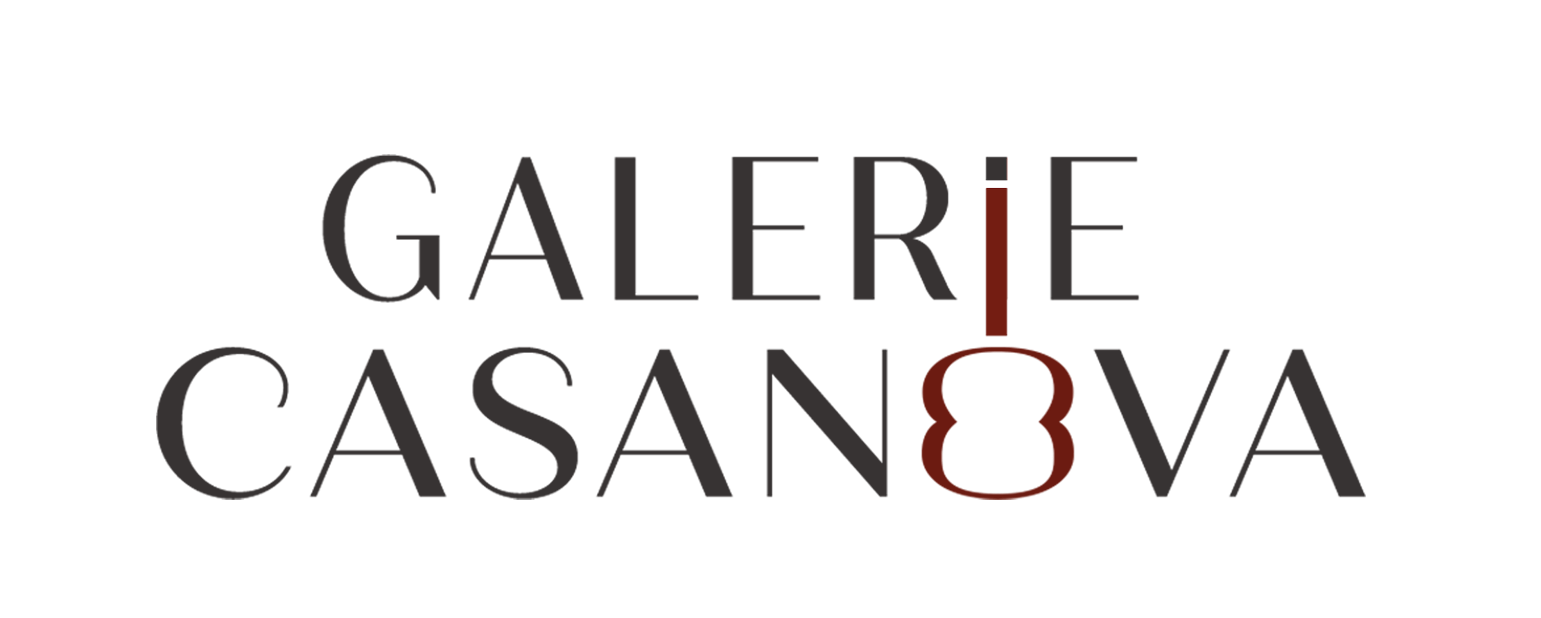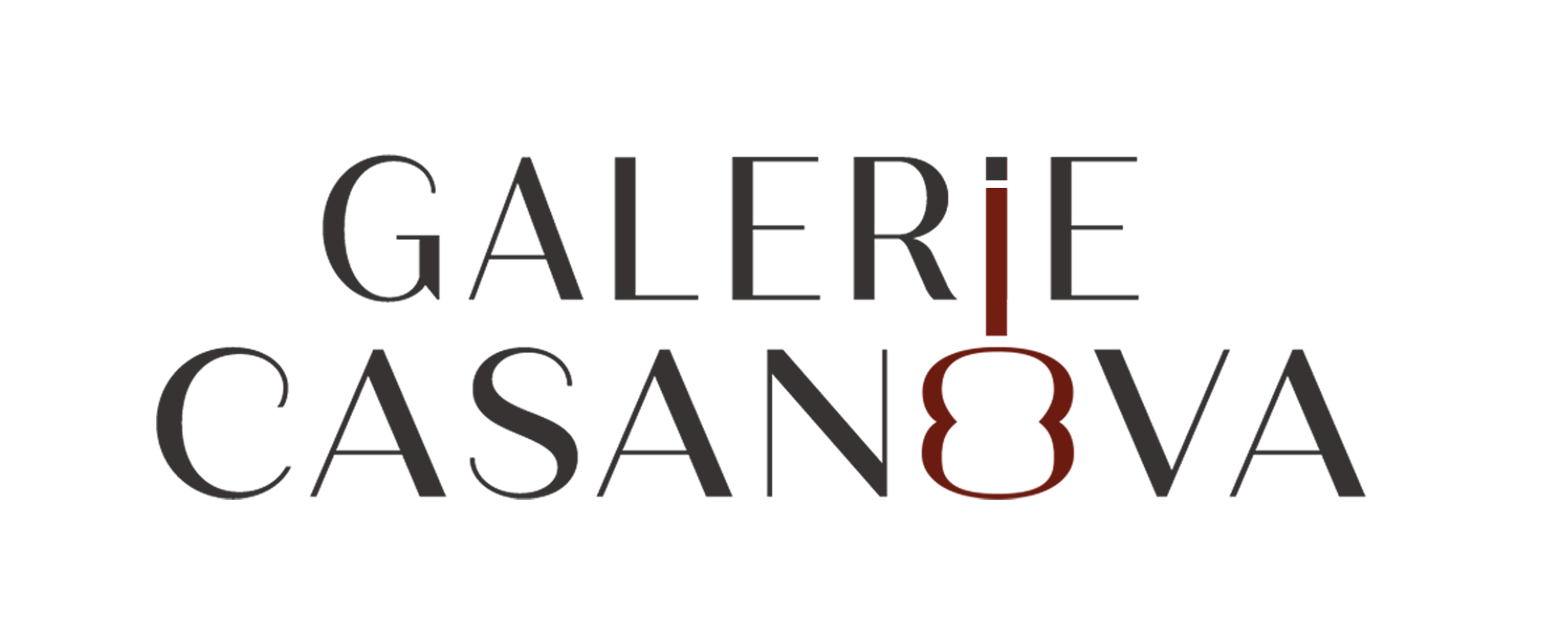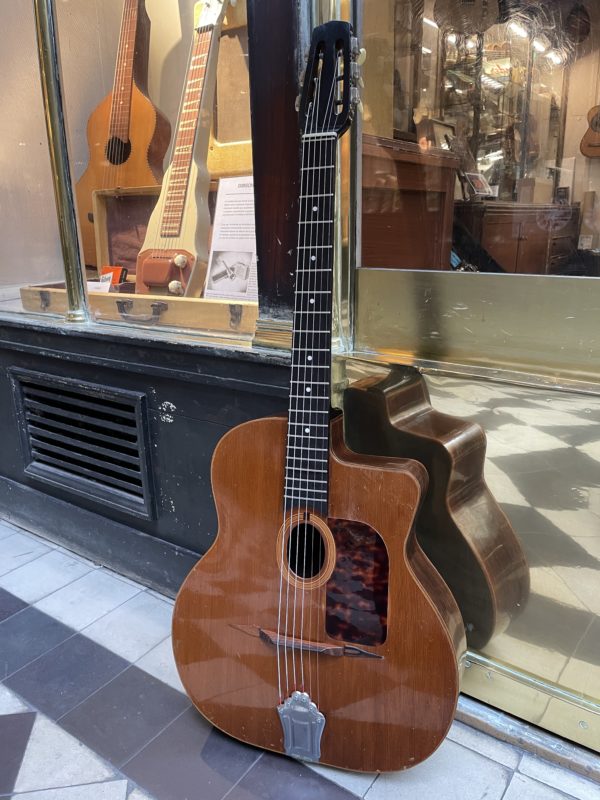Favino
Favino
FAVINO
From 1946, the Favino workshops have produced high-grade instruments. Jacques (1920-1999) and his son Jean-Pierre (1952-) Favino marked the history of French lutherie in the field of the guitar, an instrument which they greatly contributed to developing and spreading beyond our frontiers, in particular with the emblematic model Jazz Gitan played from generation to generation in the sphere of Django-style jazz by the entire Ferré family, Biréli Lagrène (1966-), Raphaël Faÿs (1959- ), Stochelo Rosenberg (1968-), but also adopted by the finest of Corsican guitarists or the concert performer, composer and improviser Michel Gentils.
From the sixties, the most prominent stars of French variété composed, recorded and performed on a Favino, Georges Brassens (1921-1981) in the lead, followed by Enrico Macias (1938-), Hugues Aufray (1929-), Maxime Le Forestier (1949-), Yves Duteil (1949-), etc. Add to this anthology so many other professionals and amateurs of these beautiful guitars with their racy and refined musicality, whose timbre is recognizable from the first notes played.
However, if today the craftsman Jacques Favino is rightly celebrated for his production of Selmer type guitars, of which he is undeniably one of the most remarkable interpreters, it should be remembered that he offered and manufactured all types of guitars. He also responded to special orders, for which he designed, within the limits of their relevance, custom-made instruments (he did concede to build a guitar in the shape of an inverted heart!). In a nutshell, Jacques Favino practiced his craft as a luthier by diversifying his production. In this respect, the profusion of musical horizons evoked by the dozens of photos of artists pinned to an entire wall of the Parisian studio at 9, rue de Clignancourt in Paris was particularly eloquent: it seems that on this impressive wall of fame, there is not a single big name of any style missing!
Born in 1920 in northern Italy, in Trecate, in the Piedmont region, Jacques Favino only arrived in France at the age of three. At the age of twelve, in 1932, he obtained his school certificate with the Mention Bien, thus making the pride of his parents who were stern workers. He first made his debut in carpentry and cabinetmaking, learning “the old fashioned way”, practically without using machine tool which his boss intentionally kept away from him so that he learned the real manual gestures. Then, in 1936, with the cabinetmaking business in free-fall and unemployment looming over him, he accepted a job as a laborer in another trade rather than going to his sector of activity as a job seeker.
In 1938, his new employer asked him if he wanted to work in mechanics, so he started an apprenticeship to become a specialist worker on mechanics lathes. In 1939, he married and, while now working for Motobécane, he was taken on board by the Germans in October 1942 as part of the Compulsory Labor Service. This episode seems to have disgusted our future luthier with the mechanics which he no longer wanted to hear about. He is lucky to have had a brother-in-law, Gino Papiri, who knew a guitar maker then looking for a foreman. This man is Bortolo Busato (1902-1960), of whom Jacques Favino said: “He was almost family, he was Italian“. Only here, our man does not understand anything in guitar and lutherie, certainly his training in carpentry and cabinetmaking guarantee him a perfect ease in woodworking, but musical instruments – in the best of cases – are not not furniture! With reason and humility, he cannot imagine becoming the foreman, the order giver to workers whose work he does not know the ins and outs of. He therefore asks to be behind a workbench, in order to learn the specific manufacture of guitars. At this time, it should be remembered that Bortolo Busato’s workshop was newly installed in the 11th arrondissement, at 4, Cité Griset, and that it had around twenty-five employees.
It is at the same time that the decisive meeting with Jean Chauvet, violin maker, will really change his life. He proposes to Favino to manufacture violins. Thus, after his long work days at Busato, he trained him until late at night in his workshop, set up in a small room in his apartment on rue des Moines, in the 15th arrondissement of Paris. The violin is a trigger for Jacques, who falls in love with its curves and its lightness, with its complex alchemy. Having installed his own workbench at the end of Jean Chauvet’s, Jacques Favino made his first violin after only three months of training. His background as an “old-fashioned” cabinetmaker probably had something to do with it. Chauvet is impressed, he who had taken three years to release an instrument of this quality. The association was born, and six months later, in October 1946, they found themselves self-employed craftsmen.
After about a year and a half, Jacques Favino moved with Chauvet around 1953-54 to 9, rue Clignancourt in the 9th arrondissement. They kept building quartet instruments, even taking on apprentices. Life goes on, Chauvet becomes the godfather of his son, the agreement seems perfect. But yet, in 1956, for a “little stupidity”, a “little shouting match”, to use the same terms used later by Jacques Favino, their association will end. The separation is done on good terms. Jacques Favino was then thirty-six years old and the guitar world (in all its forms) was reaching out to him!
Jacques Favino then embarked on the all-out manufacturing of guitars, with jazz, folk, twelve-string models but not yet any Selmer models in the horizon! These guitars, Jacques Favino does not particularly carry them in his heart. Already, at the time of his partnership with Jean Chauvet, they both agreed on the poor internal structure of these guitars. Afterwards, he did do a few tests at the request of the Gypsies, but, in his own words, “it didn’t work that well“, and he decided not to continue on this path. However, hegets back to the task at the request of Antoine Bonelli, the Corsican guitarist – as it should be – accompanying Tino Rossi. The musician first asks him to replace the damaged top of his Selmer, then simply build a copy of it. In the end, by changing a few parameters in his bracings, Jacques Favino is rather satisfied with his work, assuring that the guitar made for Bonelli “sounded like a cannon” and undoubtedly better than originally !
From 1954, there were three of them in the workshop with his brother-in-law Gino Papiri and Ugo Terraneo. The manufacture of the soundboards is and will remain the prerogative of Jacques Favino, as so much the sound of the guitar resides in this major part of the construction, as well as the choice of its woods, which he selects himself in the Vosges and the Doubs. As for varnish, another matter for contention among luthiers, Jacques Favino went from French polish to spray-on in around 1956, at the same time as Di Mauro would do. Some time later, around 1957-58, word of mouth serving as tight and effective advertising, the young Enrico Macias (1938), rising star of French song and renowned Malouf musician, in turn ordered his first Selmer type model.
It is only after that that the manouches and gypsies will follow, to finish establishing the reputation of these peculiar guitars, whose production amounts, according to Jacques Favino, to some five hundred instruments. All bear a numbered label, dated and signed by him, sometimes with a personalized note for his customer.
The first client with a certain notoriety to have encouraged him in this direction was Matelo Ferré (1918-1989), whom he met around 1949 at Major Conn. In view of his work, he had then waited for him on the sidewalk outside his shop to order a big guitar, a “jumbo-classic with steel strings”, an instrument that will be stolen from Matelo afterwards. From this first meeting, a faithful friendship was born between the two men, which continued with the Ferré sons. Then followed the entirety of hip French artists which paraded in and out of the Favino workshop at 9, rue de Clignancourt: Georges Brassens, who used the famous studio shots and details of his guitars on the covers of his records, Enrico Macias, Henri Salvador, Marie- José Neuville, Barthélémy Rosso, Maxime Le Forestier, who had a twelve-string Favino made for his girlfriend Joan Baez, all the manouches and gypsies of the epic and historical period, from Joseph Reinhardt to Jacques Montagne, through Maurice “Gros Chien” Ferret, to the Ferré brothers, over two generations.
We remember in the small circle of Django-style jazz the memorable excerpt of the documentary Django Legacy (1989) at 9, rue de Clignancourt, where we can breathe deeply the soft atmosphere – bitter shellac from the workshop and the freshness of recently cut wood under the brownish light of the dust-covered windows, to the sound of Favinos played by Boulou and Elios. The list is long, like the future of extremely talented artists who have chosen the sound of Favino guitars, a sound recognizable among thousands.
In 1978, Jacques Favino gradually withdrew from the profession, on the advice of a former cardiologist customer who recommended that he spare his health if he wanted to go a long way. He naturally continued to attend the workshop and to sign the guitars until 1981, for reasons of retirement rights. His son, present at the workshop since 1973, and of whom Jacques said that he worked even better than him, naturally took over the reins of the Clignancourt workshop, before settling in 1990 in Castelbiague, in the south of France, and in turn to develop its own work, while respecting tradition.


